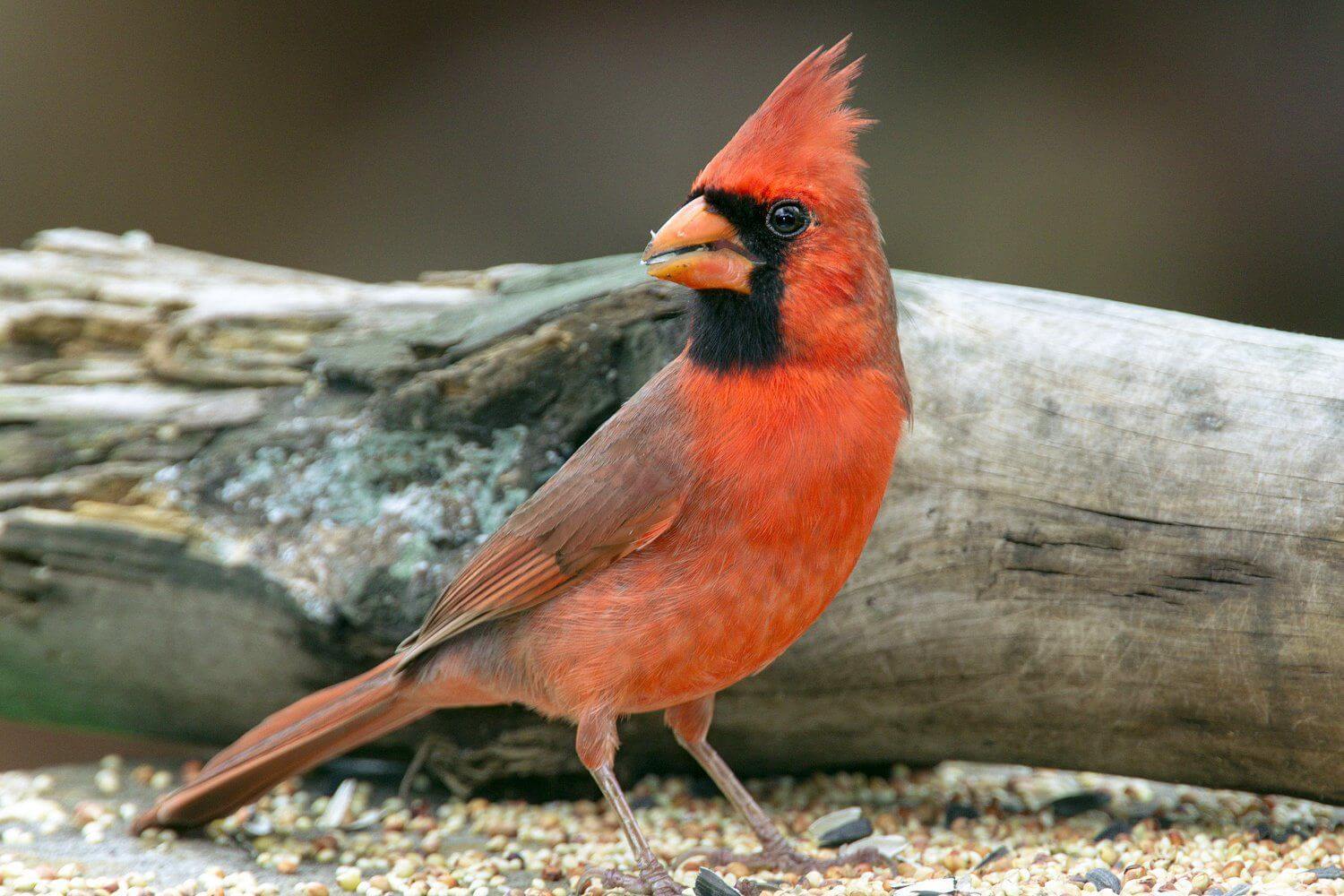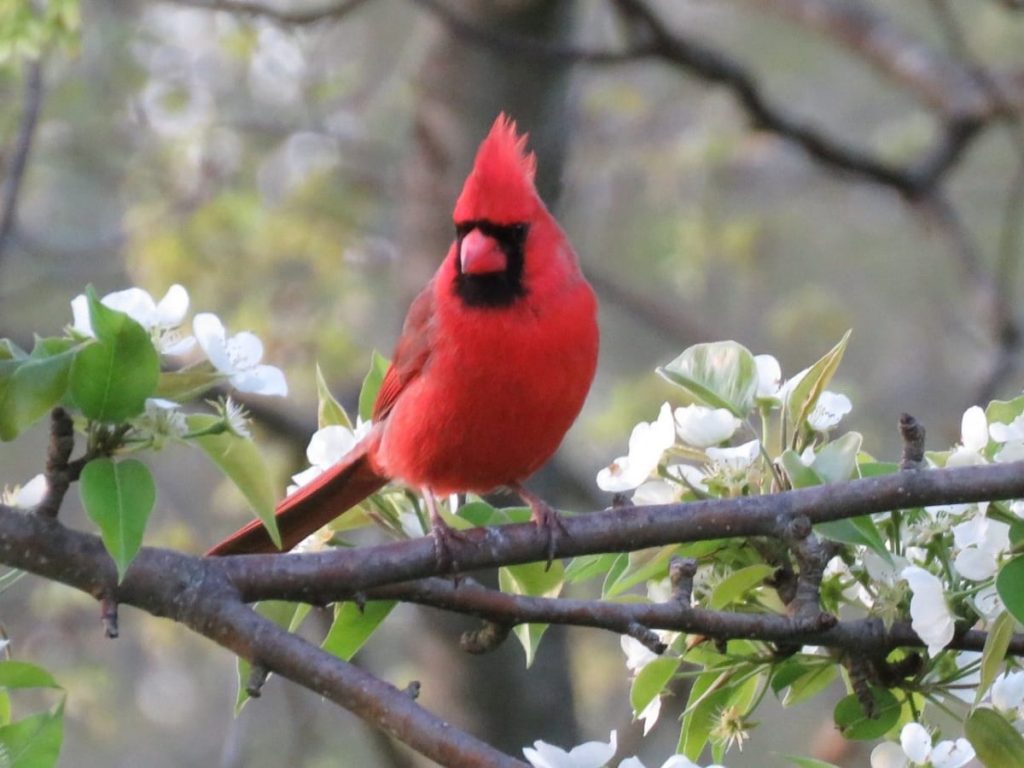Out of all birds that visit people’s backyards, North cardinals are the most desired ones. They are most comfortable to recognize among all birds because of their vibrant colors and enchanting melodies.
Males have a mesmerizing red color, and brown females have a sharp crest and warm red shades. Northern cardinals are the perfect medley of friendliness, sanity, and style. Luckily, these birds are not very hard to attract with a perfect cardinal bird feeder.
Northern Cardinals belong to non-migratory birds, which means that once they are drawn to your yard, they are likely to stay all year round there. In the north, they mainly reside in the Maine region and parts of southern Canada.
In the south, they can be found in some parts of Central America and the Gulf Coast. Cardinals natively belong to the west extending as far as South Dakota and Texas. Along with these, Cardinals can also be found in Hawaii, South-western California, and Bermuda.
With some of these changes in your backyard, along with a cardinal bird feeder setup, your yard can become a favorite habitat for these birds. Like all living beings, Cardinals also need food, water, and shelter to survive.
7 Tips to Attract Cardinals to Your Yard
1. Food Is the Key

The most important thing that you will need to attract the Cardinals is the food that they love. Northern Cardinals have a thick and robust beak, which is made for heartily foods and large seeds.
The favorite seed options of Cardinals include Safflower seeds, white milo, and black oil sunflower seeds. In addition to large seeds also enjoy eating cracked corn, nuts, and berries. A small chunk of suet kept in a cardinal bird feeder is also a great choice in winters for cardinals.
Instead of any food in cardinal bird feeders, you can also use a blend of safflower and sunflower seeds. The best thing about this blend is that it is ignored by squirrels and other birds and is loved by cardinals. It is also essential that you check cardinal bird feeders regularly, especially early in the morning and late in the evening. It is the favorite time for the Cardinals to eat.
Other common foods that cardinals like include dogwood, buckwheat, wild grape, sumac, mulberry, etc. Cardinals feed on fruits and seeds and love to eat insects such as beetles, flies, moths, crickets, spiders, butterflies, and katydids. Once cardinals realize that they have an all-around year food supply, they are likely to take up a permanent residence in your backyard.
2. Choose Right Bird Feeder
Cardinal bird feeder’s design holds great importance as Cardinals will not eat from it if it is not spacious enough. Cardinals prefer reliable and big feeders as they are medium in size. Big size cardinal bird feeder allows these birds to eat, facing forward, and perch on quickly.
- Dual Squirrel Proof Baffles: Prevents access from squirrels and large birds.
- Riot Grade Tube Design & All Weather Protection: Robust construction ensures durability and...
- Patented Technology: Spring loaded feeding ports close when larger animals land, automatically...
- Huge Seed Capacity & Easy to Clean: Holds up to 4lbs of bird seed, reducing refill frequency. Simple...
While selecting any cardinal bird feeder, you should ensure that it has enough space to quickly move around as these birds do not like twisting their bodies while eating. An ideal cardinal bird feeder should include trays, hoppers, and platform feeders as these provide stability to the cardinal feeder.
- LIFETIME GUARANTEE and VIP SUPPORT: Like all Nature Anywhere outdoor bird feeders, if for whatever...
- THOUGHTFUL AND UNIQUE GIFTS for bird lovers (and pet lovers!) See colorful wild birds from up close....
- LIFETIME SUCTION CUP GUARANTEE. Four heavy duty suction cups using our groundbreaking EVERGRIP X4...
- NO SQUIRRELS! Ever seen a squirrel climbing a bird feeders window. They can't! Keep the feeder...
These elements are important as they keep the cardinal bird feeder stationary during strong winds and other extreme weather conditions. Otherwise, the birds would be scared if you will use general hanging feeders or tube feeders. You should also ensure that you keep a variety of feeders in your yard and observe which design is most loved by the cardinals.
No products found.
3. Right Place for The Feeder
Choosing a perfect place for the cardinal bird feeder placement is also an important factor in appealing Cardinals to your yards. Cardinals are quite shy and prefer to have a protective cover while eating.
It would help if you chose a place shielded from strong winds and other things that can scare off cardinals. You can place cardinals under a tree or near shrubbery in your backyard. These hiding spots will provide them with a sense of safety while eating.
You should also keep in mind placing cardinal bird feeders because you should see them at a certain height above ground so that the food for cardinals is protected from squirrels and other seed scavenging critters.
- Watch Birds Love Birds: We focus on researching and developing wild bird feeders, squirrel proof...
- Easy to Use: Open the lid, put the wild bird seeds, sunflower seeds for birds into the bird feeder,...
- Large Capacity: 8.5 x 7.9 x 7.3 inches. Made of durable, high quality plastic. The clear plastic...
- Clever Design: Inclined roof to help prevent the seeds inside from getting wet. When the seeds are...
You can make your cardinal feeding zone squirrel proof by placing the seed feeder at 10 feet from the nearest tree or fence and at least 8 feet above the ground. If these distances do not match your backyard’s dimensions, you can use poles and baffles to keep squirrels away. If there are no squirrels in your backyard, then you can spread delights on the ground for cardinals.
4. Water Sources
Water is as essential as food for cardinals. They need water for drinking as well as bathing. Their need for water can be fulfilled using mini fountains or birdbaths. Water helps these birds to regulate their body temperature.
If these birds are deprived of freshwater, then they can dehydrate or overheat. Cardinal birds need water in summers and winters when most of the water sources are generally frozen and become unusable for the cardinals.
Once the Cardinals become familiar with the water source in your backyard, they will stay there all year-round. During the winter season, make sure that the water in these baths is changed and heated.
- BUILT TO LAST: Made of durable, weather-resistant resin with a large 0.8 gallon basin to save water...
- SOLAR-POWERED LAMP: The decorative lantern houses a powerful solar light designed to illuminate your...
- BUILT-IN PLANTER: The wide, recessed base doubles as a planter, perfect for displaying your favorite...
- FILLABLE STAND: Fill the hollow space in the pedestal column with sand or water to weigh down your...
As these birds belong to the northern area, a heated bath becomes a necessity for these birds. You can also place these water baths on grounds where these cardinals can reach them quickly. Like cardinal bird feeders, these bird baths should also be large so that they can accommodate cardinals.
The ideal birdbath should be 2 to 3 inches deep. You can also add drippers to your birdbath as it keeps the water moving and prevent dirt and algae build up.
5. Protective Shelter
As mentioned above, Cardinals are shy birds that feel safe in a secluded area which are surrounded by foliage of bushes and trees. To make these songbirds feel safe, you can plant trees and shrubs of different heights in your backyard.
While choosing trees for these Cardinals, keep in mind that you choose evergreen trees to cover these birds even during the hard winters. These birds voraciously eat seeds. Even if there is a cardinal bird feeder present in your backyard, these birds will still gather most of their food from nature.
- HANGING BIRD FEEDER TRAY: Our standing bird feeder and bath is made of high-quality metal materials,...
- EASY TO CLEAN: the open hanging bird seed catcher allows you to check the remaining bird species and...
- ATTRACT ALL TYPES OF BIRDS: Keeps birds happy all season long with delicious bird food meals —...
- SIZE: 6.2*10.4*18.1inch Cast iron bird feeder tray Perfect open-platform for feeding birds High...
To make Cardinals forage in your backyard all year round, you can plant some of Cardinals’ most loved seed sources. Also, plant some local trees; this will also attract local birds in your backyard. The list of favorite trees of cardinals includes serviceberry, dogwood, mulberry, and spruce. The shrubs which are loved by cardinals include staghorn sumac, grey dogwood, and viburnum.
6. Nesting Site
Cardinals prefer thick shelter for nesting, just like their shelter. The nesting site for Cardinals generally includes twiggy and dense shrubs. The nests of cardinals are four layered built around a twig frame enclosed by a mat made of leaves and lined by barks and finally dried grass.
The home of singing birds usually takes 3 to 9 days to be built. If you have a variety of shrubs in your backyard, those shrubs can provide various materials that these cardinals can use to construct their home.
As mentioned previously, including some of the evergreen trees will act as a nesting site for these birds. You can make a cluster of the shrubs and trees near the boundary of your property; this will undoubtedly attract Cardinals. And do not forget to double the benefit by choosing the shrub, which can act as food for these birds.
The best nesting sites include Clematis, Hawthorn, Grapevines, and dogwood plants, along with shrub thickets. You can help these Cardinals with their nests by providing them with small twigs, grass clippings, and pine needles.
Another interesting fact about the Cardinals is that they do not use birdhouses. Cardinals also do not reuse their nests, but a pair of Cardinals may raise several broods every year, so providing these birds a dense cover of trees and shrubs will surely make cardinals stay there all year round.
7. Encourage Caterpillars.
For most of the year, cardinals eat seeds, parts of plants, and some flowers such as forsythia. But during their breeding season, which occurs in summers, their diet switches to protein-rich insects such as caterpillars and earthworms.
When the eggs of the cardinals hatch in spring, they are mostly fed with soft caterpillars. You can make it easier for birds to find caterpillars by planting caterpillar host plants such as fennel, dill, milkweed, coneflower, and parsley to your garden beds.
- PREMIUM WILD BIRD FOOD BLEND ideal for attracting a variety of colorful songbirds to your backyard...
- HIGH IN ENERGY AND NUTRITION that will keep wild birds visiting your feeder frequently and staying...
- CONTAINS INGREDIENTS WILD BIRDS LOVE such as sunflower seeds, peanuts, mixed feed nuts, raisins,...
- SPECIALLY BLENDED TO APPEAL TO A VARIETY OF BIRDS like Cardinals, Chickadees, Nuthatches, Grosbeaks,...
Do not worry about the damage to these plants by caterpillars, as cardinals will find them before any significant damage to plants. If adding plants is not an option for you, make sure that you avoid using any pesticide that might kill caterpillars.
Here are 3 Things You Should Avoid
It is not entirely true that adding the above elements to your yard will attract cardinals, and there are few things that you also need to avoid in the backyard so that cardinals feel safe and visit all year round.
Reflective Surfaces
It is a fact that the Cardinals attack their reflections as a measure to protect their territory. Whenever cardinal birds notice their reflection in a window, chrome number, or a reflective grill, they assume that it is a rival bird and will attack their reflection to drive the intruder away.
Cardinals’ reactions to their reflection include flying against the reflection, raking the reflection with their talons, and even trying to beat it with their wings. Cardinals also strike different threat poses between the attacks.
These attacks do not cause any severe damage but can lead to the bird’s exhaustion, ultimately making it more vulnerable to diseases and malnutrition.
The key to preventing these kinds of attacks is to break up the reflection seen by the bird, so it does not feel that some non-existent bird is attacking its territory. Some of the tips to prevent these kinds of attacks are:
- Place paper shapes or decals outside windows
- Arrange strips of tapes or paper on shinny surfaces with some gap between them.
- Soaping the reflective surfaces in a tight pattern.
- Placing a non-reflective screen outside the window with some gap.
If you want the best results, you should focus on covering the reflective areas as thoroughly as possible to minimize cardinal birds’ agitation. If even an inch of a reflective surface is left, there are chances that the bird still feels threatened. In case the bird is attacking the chrome bumpers of your vehicles, you can reposition them.
Harmful pesticides
You should avoid using any harmful pesticide near a cardinal bird feeder or even near the birdbath. These herbicides contaminate food like water and kill insects which act as a food source for the cardinals. These chemicals are often lethal for Cardinals.
Predator-accessible Feeding Areas
If you have other pets at home, such as a dog or a cat, you should ensure that it does not reach a cardinal bird feeder; this will scare the birds and feel threatened. Also, avoid placing cardinal bird feeders near low shrubs and bushes and anywhere it is easily accessible for the predator.








To attract cardinals to my yard, I placed some white-striped sunflower seeds and mixed in some safflower seeds. Because, in my experience, cardinals prefer larger nuts because they have large and strong beaks.